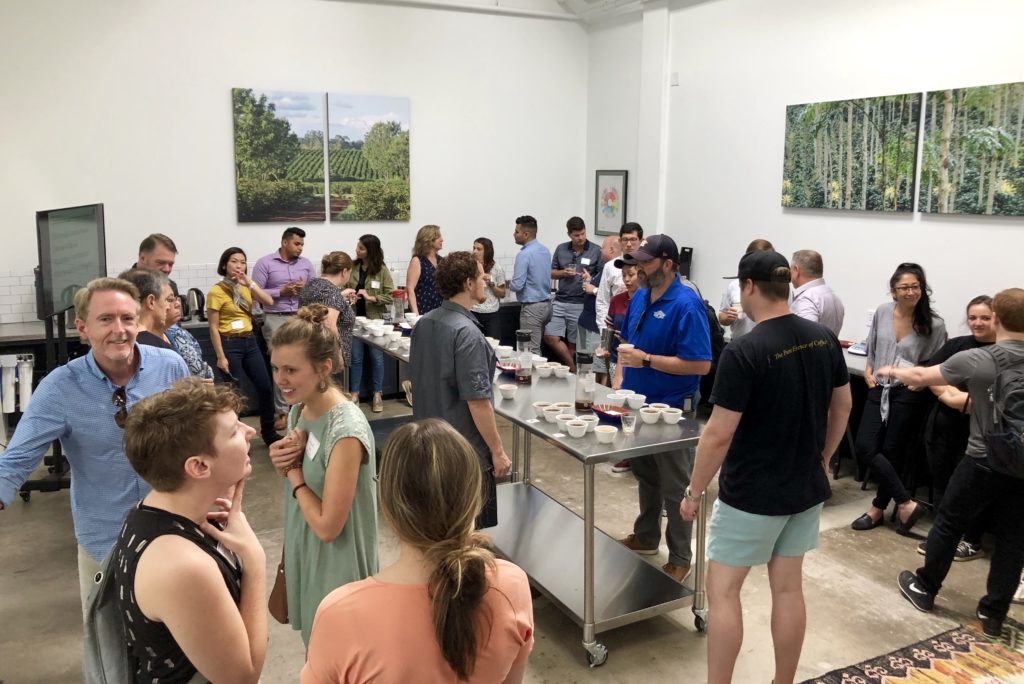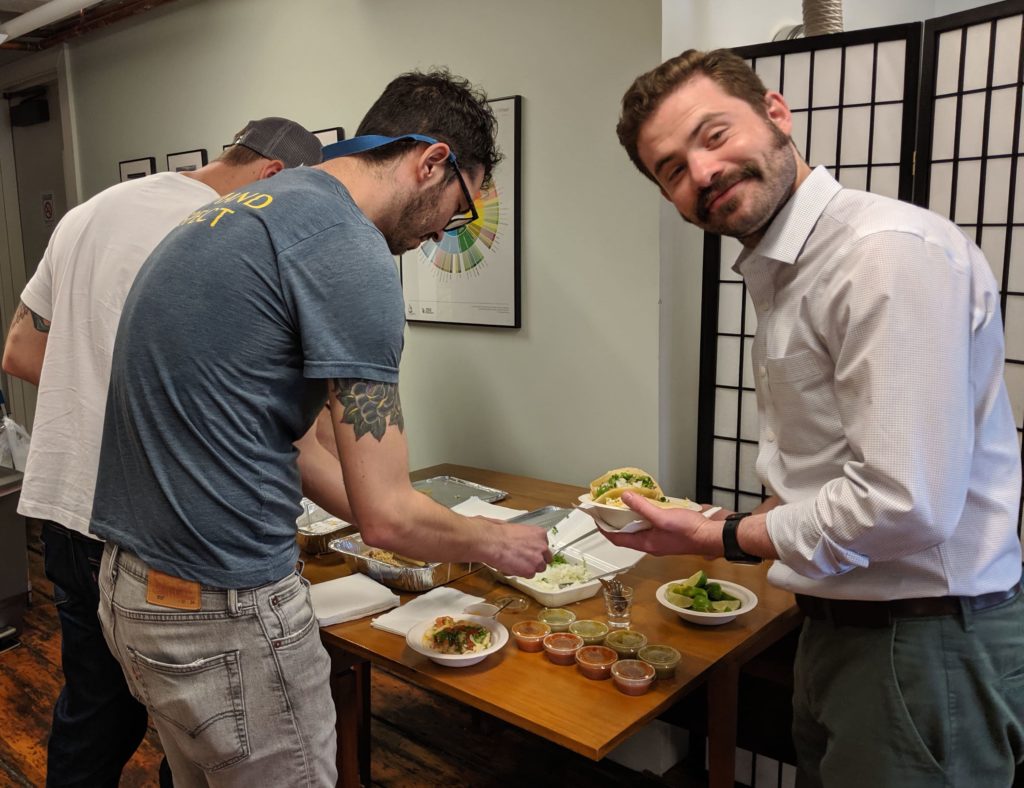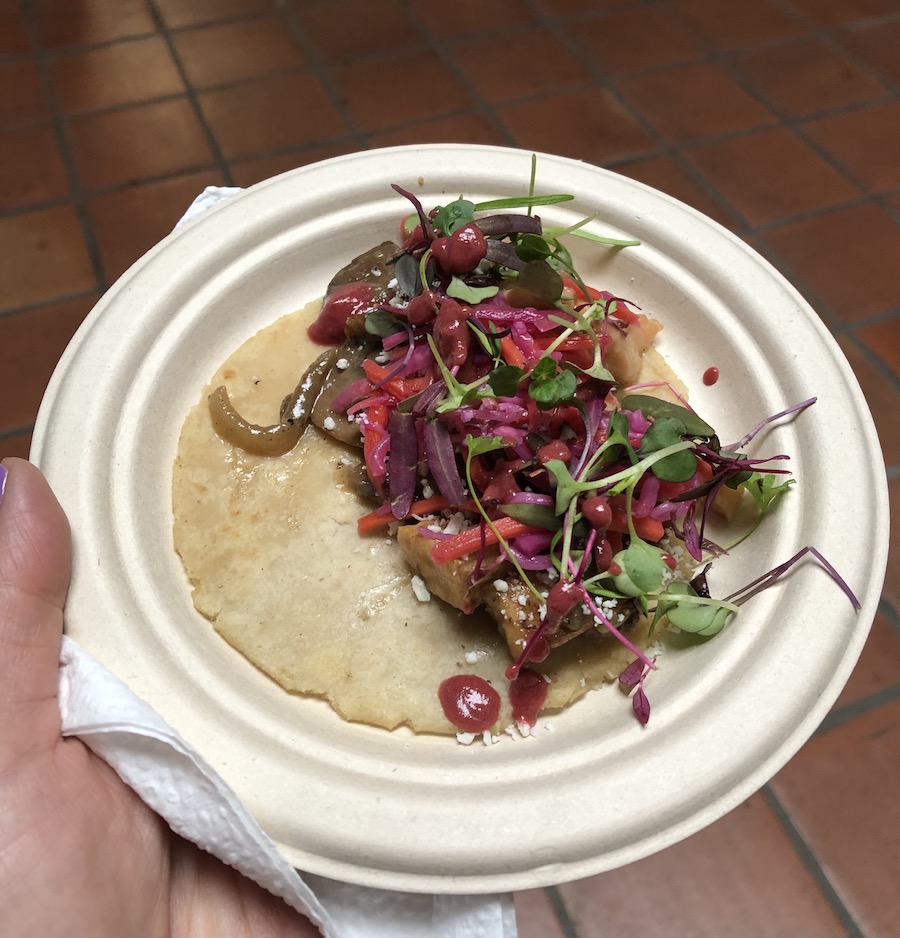Cold brew was the topic of this month’s Taco Tuesday, which for the first time took place at all three InterAmerican offices: San Diego, Houston and Providence. (When our Hoboken office opens later this year, we’ll extend the tradition there as well!)
What needs to be said first: “Our customers know way more about cold brew than we do or ever will,” said Gerra Harrigan, head of Providence Trading. “So many of them are thinking about it 24-7.”
And still, there was lots to talk about—and some surprises.
“A lot of our conversations were about what a coffee translates to when brewed another way,” said Josh Burdett, head of Houston trading.
The Houston group cupped Guatemala Santa Margarita, Kenya Nguvu AA, Colombia Finca Palmichal and Indonesia Sumatra Kerinci—first hot and then as cold brew.
Several cuppers blind-selected the Colombia Finca Palmichal as their favorite cold brew, though it was a 2018 crop, while the other three were 2019.
“If you have a great coffee that’s just a bit old, often the quality comes through but not the age. And really, a bit of age can even work to your advantage—when it’s had time to rest, the acidity is lower. And lower-acidity coffees tend to work really nicely with cold brew, which most people add milk to.”
Another fun surprise of the morning was the Sumatra, which is earthy and cedar-y and typically not a cold brew go-to.
“But cold? It’s entirely different,” said Josh. “People were super impressed by the difference. One roaster, who doesn’t buy Sumatras at all, realized it might be time to rethink that.”
In Providence, Guatemala Santa Cruz Naranjo, Colombia Macizo del Guarapas and Indonesia Sumatra Kerinci Honey were on the table. And again, the Sumatra surprised.
“It was very delicious and very distinctive when we cupped it hot. But as cold brew, no one could find it in a blind lineup,” explained Gerra. “When it was cold, it completely transformed.”
The experience led to some great conversations.
One customer arrived with cans and a gallon jug of cold brew to share, and several roasters discussed the parameters they have to operate in, whether it’s matching an established flavor profile or having to create blends from existing inventory. And while low-acidity coffees are popular for cold brew, there was also talk about finding coffees that can maintain a bit of acidity during the cold-brewing process, which dramatically reduces acidity.
The group favorite in Providence wound up being the Guatemala—which had the kind of chocolate-cherry profile most people expect from a Colombia.
“The experience was super eye opening,” said Gerra. “Some folks like to use fresh, inexpensive Brazils for their cold brew. But the roaster-led conversation wound up being about how maybe that’s not the most delicious option for the price.”
In San Diego, where the taco game was seriously strong (“We have Pablo to thank, he found the most incredible vegetarian tacos, with beet-habanero salsa!” said Kayd Whalen, senior vice president), so was the sense of community.
“We had a nice showing of roasters of different sizes and experience,” said Kayd. “And they seemed eager to share information, which was very cool to see.”
San Diego’s cupping tables featured Honduras Guara Verde, Kenya Nguvu AA, Guatemala ASDECAFE Organic, Guatemala Santa Cruz Naranjo and an Ethiopia Yirgacheffe G2.
“People really liked the Kenya as a cold brew. Some people even liked it better cold than hot,” said Kayd. “It really blew some minds.” •


